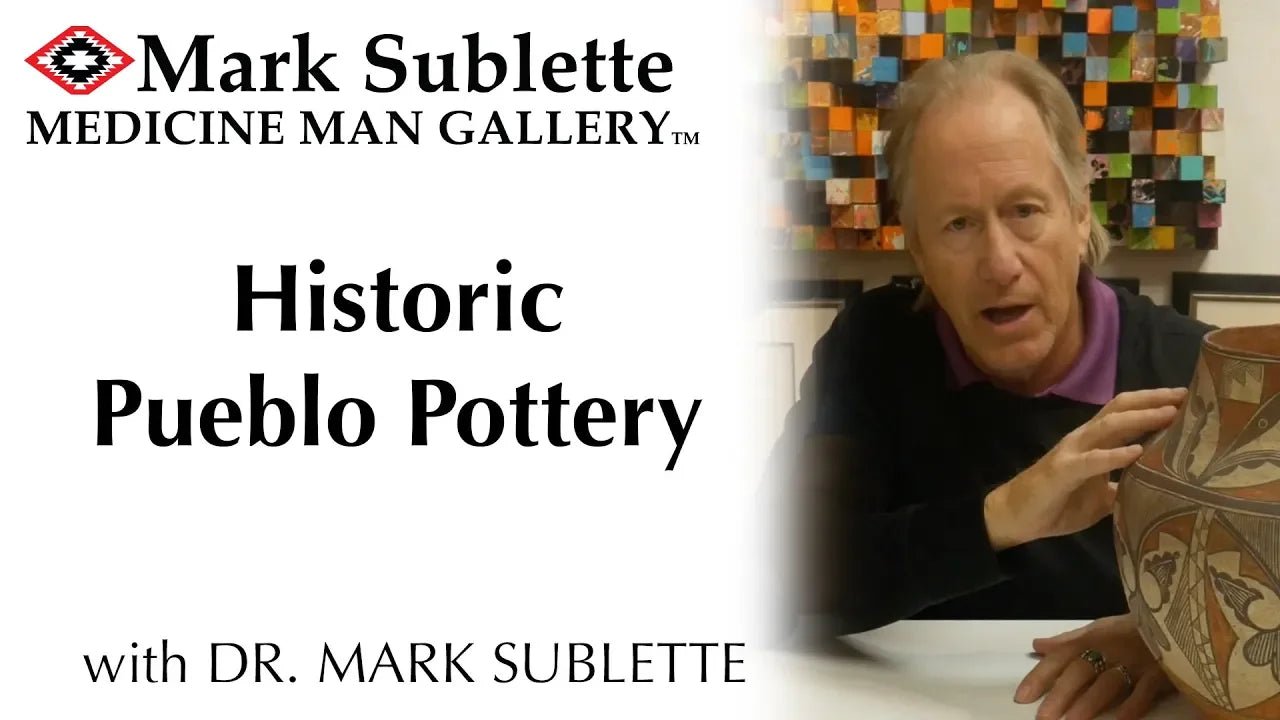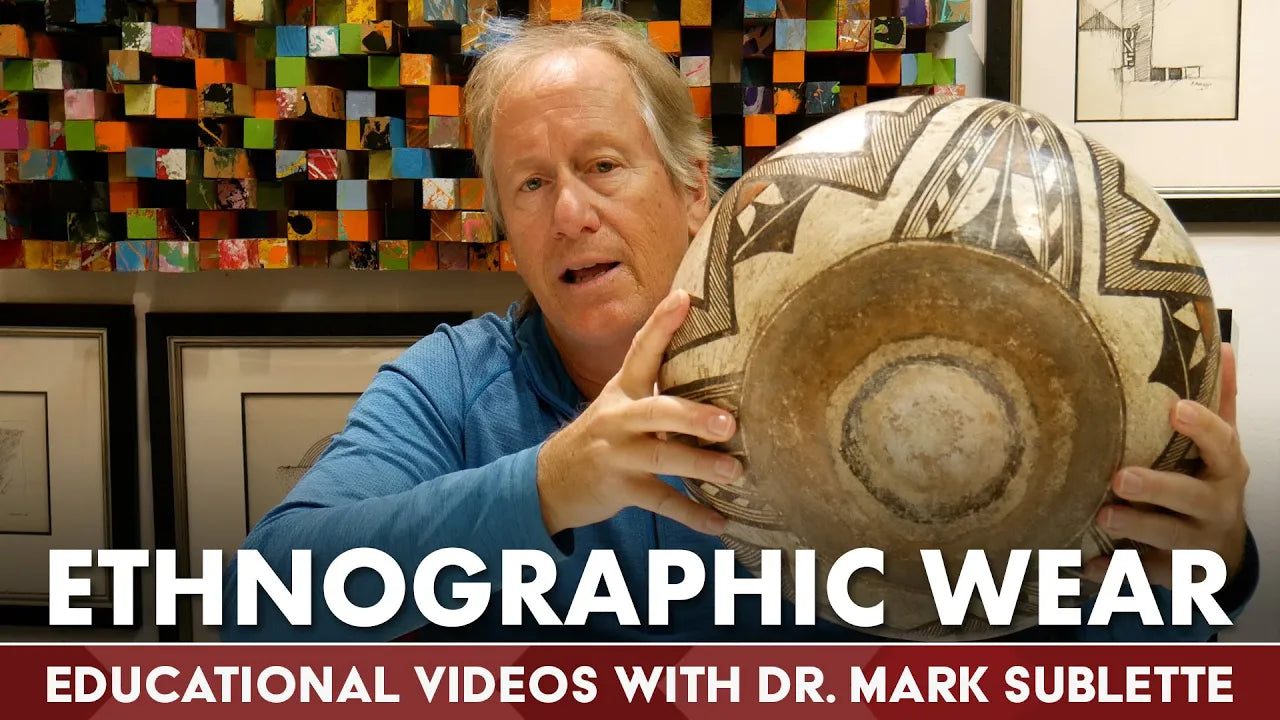Historic Pueblo Pottery
How To Collect Historic Pueblo Pottery
Michael Ettema, Ex-Director of the Desert Caballeros Western Museum in Wickenburg, Arizona and Dr. Mark Sublette, President / CEO of Mark Sublette Medicine Man Gallery

Maria Martinez (1887-1980) and Popovi Da (1921-1971)
San Ildefonso Polychrome Jar
Circa 1960, 5″ x 7.25″
Ettema: How did you become a Pueblo pottery dealer and how long have you been in business?
Sublette: Growing up in New Mexico, my family would visit Santa Fe and these visits would add to my little but growing collection of pots and pottery animalitos. These first acquisitions became the nidas of my addiction and ultimately led me to my art career which included selling pueblo pottery.
E: What makes pottery so fascinating to you and to your customers?
S: I know for me the attraction is in the sculptural nature of the vessel. Pottery needs to be handled; I love the feel of a well made piece of pottery in my hands. I love thinking these pots were simply clay deposits and an artist, contemporary or historic, turned that earth into a functional but artistic object.

J. D. Roybal (1922-1978) Firing Sequence
Circa 1976, Mixed Media, 4.25″ x 18″
E: What characteristics should buyers look for in a pottery dealer?
S: I would suggest for individuals with an affinity for collecting pottery the first step is self-education. Learn the steps of how pueblo pottery is constructed. This basic knowledge will allow the collector not only to recognize problems but also works by master artists. Pottery that is handmade is just that, there are often slight irregularities that verify the piece is authentic but also will give the viewer a sense of the quality.

Zuni Canteen, Circa 1890, 13″ x 13″
E: How do you define “quality” in Pueblo pottery?
S: I look for certain characteristics in art, and pueblo pottery is art. Is the piece symmetrical? If painted is the composition well thought out and beautifully painted? Condition is always a factor, especially for pieces made and signed by the artist. You want to pieces that are contemporary to be in very good to excellent condition. Historic pieces can have issues, even restoration, but you do want this disclosed when purchasing. Finally, the price should be somewhere in the range. For me, all art at any given time has a price range no matter where you purchase. From high to low and what your buying should fall in this collecting bell curve. If it’s out of this curve two standard deviations then your radar should go up. To know what a fair price is you need have done your research and know what the current market is. We have hundreds of pieces of pottery on our website with price, dimensions, and condition listed along with multiple images of each piece.
Medicine Man Gallery specializes in Native American Indian Pueblo Pottery of the Southwest and historic Indian Pueblo Pottery from: Hopi, San Ildefonso, Santa Clara, Zuni, Zia, Santo Domingo, Cochiti, Tesuque, Jemez, Acoma, Laguna, and San Juan Pueblos - including works by Maria Martinez, Margaret Tafoya, Old Lady Nampeyo, Fannie Nampeyo, Teresita Naranjo, Lucy Lewis, Helen Cordero, Helen Shupla, Nancy Youngblood, Nathan Youngblood, Tammy Garcia, Russell Sanchez, Frog Woman, and Feather Woman.


